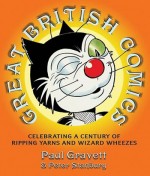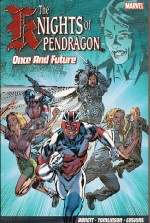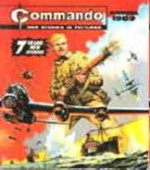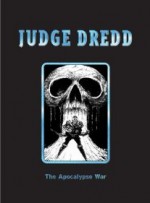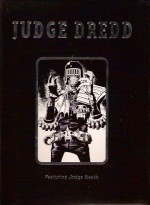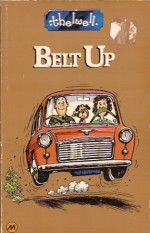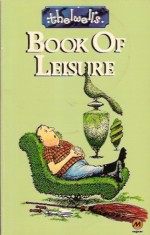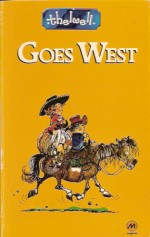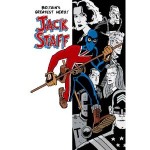
By Paul Grist (Dancing Elephant/Image)
ISBN: 978-1-5824-0335-9
Growing up a comic fan in 1960s and 1970s Britain was an oddly schizophrenic situation. Not only were we bombarded and enthralled by our own weirdly eclectic mix of TV stars, Empire jingoism and military bluster, fantastic anti-establishment fantasy, science-fiction and sport yarns – augmented by the sheer inspired, madcap anarchy of the gag strips that always accompanied such adventure serials in our anthology weeklies, but from 1959 we also had unfettered access to the exotic worlds and thinly veiled cultural imperialism of American comicbooks, bulk-imported as ballast in cargo ships and readily available in glorious full colour…
And don’t even get me started on the few, but classy European wonders such as Tintin, Lucky Luke and Asterix that also filtered into the funnybook gestalt brewing in our fevered little heads. All this pictorial wonderment tended to make us young disciples a tad epicurean in our tastes and broad-minded, eccentric synthesists about our influences…
I’ve followed Paul Grist’s work since the small press days of Burglar Bill and St. Swithin’s Day and his brilliantly refined design sense and incisive visual grasp of character have made his interpretations of Grendel, Judge Dredd and other commercial properties an excellent example of why individuality always trumps house-style. However, when he writes his own material, he steps into a creator class few can touch, always blending and refining the key elements of genre and shared public consciousness into a stunningly inviting new nostalgia. For a perfect example check out what he accomplished with hard-boiled detective archetypes in his splendid Kane (see Kane: Welcome to New Eden among others).
He established his own company, Dancing Elephant Press, to produce the kind of works big-time publishers lacked the imagination to support and in 2002 returned to the childhood delights of superhero comics with the creation of Jack Staff, who began life as a proposed Union Jack story for Marvel.
When they pulled the plug, Grist, unable to let a good idea go and now freed of the usual creative restraints that come from playing with other people’s toys, went wild and produced a purely British take on the superhero phenomenon that is simultaneously charming, gripping and devilishly clever.
I usually go into laborious (most would say tedious) detail about the events in these graphic novel reviews but this first Jack Staff collection (gathering the first 12 issues) will be an exception as Grist’s captivating style here – based on and mimicking the anthology format of British Weeklies such as Lion and Valiant – mean that each issue feels like seven stories in one. As my intention is to convince to buy this book I’m sacrificing detail for brevity… you lucky people.
Becky Burdock is a feisty girl reporter for trashy newspaper The World’s Press in a nondescript British city. In ‘Yesterday’s Heroes’ whilst hunting down a serial killer scoop on the “Castletown Slasher†she accidentally stumbles onto the identity of Jack Staff (Britain’s greatest costumed hero since WWII, but a man missing since the 1980s) when local builder John Smith saves her from a collapsing billboard.
This precipitates memories of a wartime international superhero team’s The Freedom Fighters and a battle against a centuries old vampire and strangely involves the British Q Branch (investigating un-rational or weird crimes) and US superhuman Sgt. States, Staff’s opposite number and another seemingly immortal patriotic hero.
Marvel Zombies will rightly identify this tale has echoes of the Roy Thomas & Frank Robbins “Baron Blood†storyline from the 1970s comic The Invaders and if Marvel had been more accommodating this would indeed have been a classy sequel to that saga. However they missed their chance and this magically tongue-in-cheek pastiche is the magnificent result.
There are still superhumans in this world such as heroic Tom Tom, the Robot Man and the villainous Doc Tempest and even mortal champions such as Albert Bramble and his son Harold who battle dark forces as Vampire hunters, but even they cannot prevent Becky from becoming a victim of the killer stalking the city. John Smith is clearly reluctant to rejoin the masked hero community but events keep pushing him until he uncovers an international conspiracy of sanctioned atrocity that naturally gets hushed up by the powers that be…
These stories are rife with references and cameos from fifty years of popular culture – and not just comics: thinly disguised TV icons such as Steptoe and Son, Dad’s Army and The Sweeney jostle alongside purely comicbook stars such as Captain America and Dr. Strange and members of our own uniquely bizarre pantheon such as Robot Archie, Zip Nolan, Kelly’s Eye, Jason Hyde, Adam Eterno and even relatively real people such as Alan Moore and Neal Gaiman.
A far larger part is played by incomparable poacher turned gamekeeper The Spider in the second story-arc ‘Secrets, Shadows and the Spider!‘ as things go quirkily cosmic when Becky Burdock, Vampire Reporter and the increasingly intriguing Q cops stumble into real X Files territory and we get some welcome background into recent history when a 1960s super-criminal starts stealing again.
Or does he? The Spider never shot anybody before…
The mystery is cleared up when elderly Alfred Chinard (it’s a partial anagram – work it out…) hires builder John Smith and springs a trap on his old foe before they notionally team up to stop the real thief. Of course it doesn’t really go Jack’s way and he is literally left holding the bag. After a full length Q adventure ‘Quotations’ involving a meta-fictional serial killer, ‘Out of Time’ rounds out the book.
Here, Victorian showman and escapologist Charlie Raven (a canny reworking of the superb Janus Stark) enters the picture, encountering a Dorian Gray-like mystery and losing a battle to a foe who consumes time itself. As a result the charismatic Raven endures an Adam Adamant moment and ends up in 21st century Castletown, where his enemy is still predating the human populace. Also causing trouble is Ben Kulmer – the invisible bandit known as The Claw (lovingly homaging Ken Bulmer, Tom Tully and Jesús Blasco’s astounding antihero The Steel Claw).
When that nice Mr. Chinard turns up again the stage is set for a spectacular time-rending chronal clash involving the entire expansive cast that is spectacular, boldly bewildering and superbly satisfying
The stark yet inviting black and white design, refined, honed and pared down to a minimalist approachability has an inescapable feeling of Europe about it. If ever anyone was to create a new Tin Tin adventure, Grist would be the ideal choice to draw it. Not because he draws like Hergé, but because he knows his craft as well as Hergé did. However I’m deliriously happy that he has so brilliantly assimilated the essences of the cherished keystones of my beloved comics-consuming past and given them such a vital and compelling new lease of life.
Thrilling, funny, fabulous. Buy this Book!
™ & © Paul Grist. All rights reserved.

